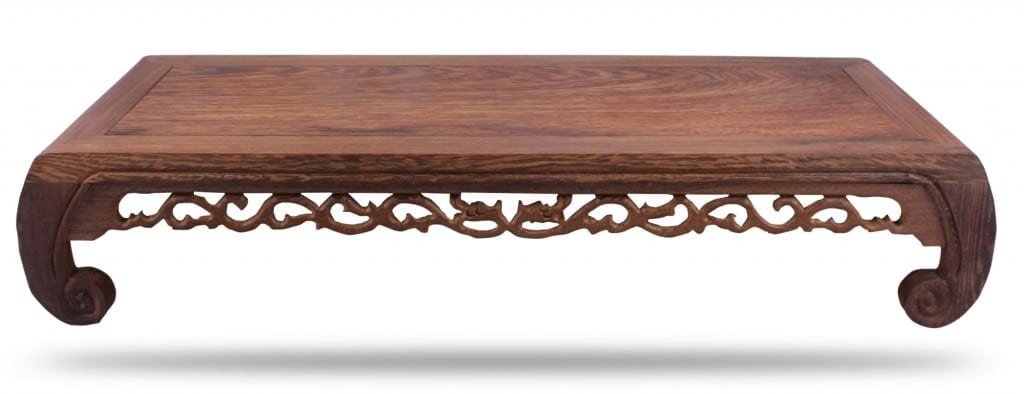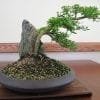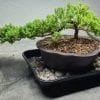The aesthetic created by the development of Bonsai of course includes trees, garden arrangements, stones and the pot itself. But the presentation is not complete if the surface on which it is placed does not have the same feel.
So a level of thoughtfulness also goes into where the Bonsai tree or garden finds a space in a house or yard area.
Light is important, the temperature and humidity levels are vital, and often, the table, shelf or floor space must be chosen carefully as well.
The Importance of Display Tables
Bonsai display tables are no less important than the pot, stones, tools and humidity or drip tray. They are essential to protect whatever floor or carpeting is underneath them. And they are important to the whole look of the bonsai area.
Each table adds a sense of formality that sets the bonsai garden apart from the rest of the room and emphasizes the time and meditative aspect of your careful arrangement.
The very best are hand carved by Chinese artisans who understand the origins of bonsai and the art of cultivating the foliage in the garden.
A hand finish with a stain protects the quality and long life of the materials while giving the table a rich shine against the bonsai pot.
Ideally they are made of hardwood that cradles your hard-won treasure elegantly. The many shapes, designs and sizes ensure that there is one perfect for both your bonsai and your décor, which will complement and display your living Zen art but not detract from its beauty.
Tokonoma
Stands are also used when displaying your bonsai in a ‘Tokonoma’ arrangement.
A Tokonoma arrangement is one adhering to traditional Japanese aesthetics. It uses a presentation Zen to make a focal point in a more Eastern style (where Western rooms often focus on a mantle).
The Tokonoma, or Toko, is a recessed or elevated alcove that contains very little, usually a scroll with an image or calligraphy, and flowers or a very well-kept bonsai.
The bonsai originally were thought too dirty to go in, but as the art evolved, bonsai were deemed even more elegant and worthy of the space than traditional flowers.
No one steps into the Toko unless absolutely necessary. Important guests are seated with their backs to the Tokonoma, so the homeowner is not seen as trying to show off the display.
The bonsai stand enters the presentation as one of the few items in the Toko. It serves to melt into the background while keeping the cleanliness in tact and any dirt or water off of the pristine floor.
Whether creating a Tokonoma or not, there are so many options for one in selecting a display table or stand, one is sure to appeal to every Bonsai gardener.
There are stands or tables in every color and type of wood or plastic, beautiful bamboo bases, elaborately sculpted stands in the form of roots, scroll-legged bases, turntables for a full view and even elegant stands with marble tops for a regal look.
The length and height vary to fit every size of tree or pot and there are neutral shades to fit any room’s color scheme.


